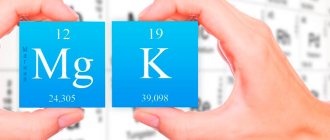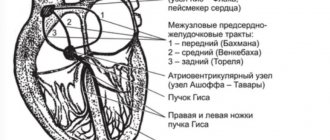General information
Homocysteine is a product of the metabolism of cysteine and methionine. Its metabolism requires folic acid, B6 and B12. If they are deficient, the level of Homocysteine may increase. An excess of this substance leads to the development of serious health problems. Blood clots and damage to vessel walls may occur. Blood test for homocysteine
is often used to determine the likelihood of cardiovascular pathologies, but its value in this regard is questionable. Studies have found that replenishing folic acid and vitamin deficiencies does not reduce the risk of disease.
A sharp increase in indicators is often observed with homocysteinuria. This is a genetic disease in which there is a defect in the enzyme that prevents the breakdown of methionine. Amino acids accumulate in the body. A newborn with this disease is visually no different from healthy babies. Violations appear only after a few years. Children with this disease are thin and tall, and have thin fingers. They develop skeletal abnormalities, develop osteoporosis, and may develop early cardiovascular diseases.
When do homocysteine levels increase?
Hyperhomocysteinemia is an increased level of homocysteine in the blood: above 15 µmol/l.
Why is this happening?:
- Enzyme disruption . Homocysteine levels rise because enzymes cannot convert it into other amino acids. Such violations are rare, but can lead to serious complications. For example, a defect in the enzyme cystathionine beta synthase leads to changes in the lens, problems with intelligence and the early development of atherosclerosis.
- Lack of vitamins. If the body does not have enough vitamins B6, B9 and B12, then even enzymes with normal activity will not be able to work correctly. The cause of vitamin deficiency may be problems with intestinal function, alcoholism, liver disease and insufficient intake of vitamins from food.
- Renal dysfunction. The exact mechanism is unknown, but it may be related to impaired homocysteine excretion.
Interpretation of results
Reference values vary depending on age. To correctly interpret the results, you must consult a doctor; self-diagnosis is unacceptable. Elevated levels of homocysteine may indicate a deficiency of B vitamins, kidney failure, diabetes, psoriasis, senile dementia, and pregnancy complications. They can also be elevated due to malnutrition. Significantly elevated levels in a newborn indicate homocysteinuria. To confirm this diagnosis, additional examination is required. Amino acid deficiency is observed in Down syndrome and hyperthyroidism.
The test results may be affected by long-term use of a number of medications, so you should inform your doctor if you are taking any medications.
Homocysteine and pregnancy
To date, the study of how homocysteine levels affect the course of pregnancy is still ongoing. Early evidence suggested that a mutation in the MTHFR gene, associated with elevated homocysteine levels, may lead to complications during pregnancy. Complications such as preeclampsia, early termination of pregnancy, and intrauterine growth disorders have been associated with homocysteine levels.
However, more modern sources claim that there is no reliable connection between the MTHFR gene variant and pregnancy complications.
Hyperhomocysteinemia
The following forms of hyperhomocysteinemia are distinguished:
- Heavy;
- Moderate;
- Easy.
A severe form of hyperhomocysteinemia develops in patients with an increase in homocysteine levels greater than 100 micromol/l. The disease occurs for the following reasons:
- Hereditary homocystinuria due to homozygosity for defective genes for enzymes of methionine biosynthesis (cystathionine-b-synthase or 5,10-methylenetetrahydrofolate reductase);
- Hereditary disorders of vitamin B12 utilization;
- severe vitamin B12 deficiency.
When homocysteine levels increase to 30–100 µmol/l, a moderate form of homocysteinemia develops. It occurs with severe renal impairment (reduced clearance of homocysteine by the kidneys), moderate vitamin B12 deficiency, and severe folate deficiency.
A mild form of hyperhomocysteinemia develops when homocysteine levels rise to 10–30 µmol/L. The disease is caused by the following reasons:
- Heterozygosity for the defective cystathionine b-synthase gene, homozygosity for the C677T base substitution in the 5,10-methylenetetrahydrofolate reductase gene;
- Kidney transplantation;
- Kidney failure;
- Slight deficiency of vitamin B12 and folate;
- Lack of thyroid hormones;
- Certain medications (penicillamine, methotrexate, cyclosporine, phenytoin, carbamazepine, 6-azauridine, nitrous oxide).
Hyperhomocysteinemia can be caused by genetic mutations: defects in the enzymes methylenetetrahydrofolate reductase, cystathionine γ-lyase or cystathionine β-synthase.
Homocysteine-lowering therapy reduces the risk of developing cardiovascular disease. Its goal is to reduce homocysteine concentrations in patients at high risk of heart disease to 10 µmol/L. In order to achieve a decrease in homocysteine levels to normal in patients with low and moderate forms of hyperhomocysteinemia, folic acid is prescribed from 0.4 to 5 mg / day or vitamin B12 in a dose from 0.5 to 1 mg / day, or both drugs are used. A combination drug is used that contains coenzymes B1, B6, B12, as well as lysine and carnitine and lysine. Folic acid is present in spinach, most plant foods that have leaves, green vegetables, liver and fish. A promising direction in the treatment of homocysteinemia is the use of statins.
Hyperhomocysteinemia in pregnant women
Hyperhomocysteinemia in pregnant women remains one of the leading causes of neural tube defects (anencephaly, meningocele and spina bifida), lower limb defects and congenital heart defects in the fetus, and can also have direct fetotoxic and teratogenic effects. In later stages of pregnancy, hyperhomocysteinemia is the main cause of the development of chronic placental insufficiency and chronic intrauterine fetal hypoxia, which leads to a decrease in the genetically determined weight of the fetus and a decrease in the functional reserves of all life-supporting systems of the newborn.
In the presence of homocysteine in excess concentrations, sodium-potassium adenosine triphosphatase in the membrane of vascular smooth muscle cells is inhibited, intracellular sodium concentration increases, and electrolyte disturbances develop. This causes vasospasm and becomes an essential element of the vicious circle that underlies the mechanism of development of arterial hypertension, preeclampsia and associated complications. In this regard, gynecologists conduct a dynamic assessment of blood homocysteine levels in pregnant women suffering from various forms of arterial hypertension.
This indicator is a marker of endothelial dysfunction and a prognostic indicator of the development of obstetric complications. In chronic arterial hypertension, the highest level of blood homocysteine is detected in the first trimester of pregnancy. In preeclampsia and preeclampsia against the background of chronic arterial hypertension, higher levels of blood homocysteine are found in the second and third trimesters of pregnancy. Blood homocysteine levels in the third trimester of pregnancy above 5.8 µmol/l are associated with the development of preeclampsia.
How to control homocysteine levels
- Introduce into the diet foods containing vitamins B6, B12, folic acid;
- All women of reproductive age should consume a daily dosage of folic acid of 400 mcg per day;
- Reduce consumption of foods containing the amino acid methionine:
- Fish,
- Meat,
- Cheese,
- Eggs,
- Nuts.
Any diet is prescribed individually, so to change your diet you should contact a specialist.
Sources:
- Kim, J., Kim, H., Roh, H., Kwon, Y., Causes of hyperhomocysteinemia and its pathological significance, 2021.
- S. Brustolin, R. Giugliani, and T. M. Félix, Genetics of homocysteine metabolism and associated disorders, 2010.
- Andrey N. Gaiday, Akylbek B. Tussupkaliyev, Saule K. Bermagambetova, Sagira S. Zhumagulova, Leyla K. Sarsembayeva, Moldir B. Dossimbetova, Zhanibek Zh Daribay, Effect of homocysteine on pregnancy: A systematic review, 2021.
- Elena Voskoboevaa, Alla Semyachkinab, Maria Yablonskayab, Ekaterina Nikolaevab, Homocystinuria due to cystathionine beta-synthase(CBS) deficiency in Russia: Molecular and clinical characterization, 2021.
- Natassia Robinsona, Peter Grabowskib, Ishtiaq Rehman, Alzheimer's disease pathogenesis: Is there a role for folate?, 2017.
- Nadia Bouzidi, Majed Hassine, Hajer fodha, Mejdi Ben Messaoud, Faouzi Maatouk4, Habib Gamra, Salima ferchichi, Association of the methylene-tetrahydrofolate reductase gene rs1801133 C677T variant with serum homocysteine levels, and the severity of coronary artery disease, 2021.
- NHS, Homocystinuria
Introduction
Homocysteine is a product of the conversion of methionine, one of the eight essential amino acids. From homocysteine, another amino acid, cysteine, which is not one of the essential amino acids, can subsequently be formed.
Excess homocysteine that accumulates in the body can be converted back into methionine. Cofactors for enzymes in the methionine metabolic pathways in the body are vitamins, the most important of which are folic acid, pyridoxine (vitamin B6), cyanocobalamin (vitamin B12) and riboflavin (vitamin B1).
Homocysteine is not a structural element of proteins, and therefore does not enter the body with food. Under physiological conditions, the only source of homocysteine in the body is the conversion of methionine.
Homocysteine has a pronounced toxic effect on the cell. To protect the cell from the damaging effects of homocysteine, there are special mechanisms for removing it from the cell into the blood. Therefore, if an excess of homocysteine appears in the body, it begins to accumulate in the blood, and the main place of the damaging effect of this substance becomes the inner surface of the blood vessels.
To convert excess homocysteine to methionine, high concentrations of the active form of folic acid (5-methyltetrahydrofolate) are required. The main enzyme that converts folic acid into its active form is 5,10 methylenetetrahydrofolate reductase (MTHFR). A decrease in the activity of this enzyme is one of the important reasons for the accumulation of homocysteine in the body. (Fig. 1)
Rice. 1
Please note that homocysteine can only be formed from methionine. Homocysteine can be converted either to cystathionine, which is subsequently used for the synthesis of cysteine, or to methionine. Vitamins play an important role in all key stages of methionine and homocysteine metabolism. Red indicates the methionine conversion cycle, green indicates the folic acid conversion cycle. MTHFR - 5,10 methylenetetrahydrofolate reductase. Methionine, homocysteine and folic acid are amino acids. Amino acids are the most important substrates for nitrogen metabolism in the body. Proteins, enzymes, purine and pyrimidine bases (and nucleic acids), pyrrole derivatives (porphyrins), biologically active compounds of peptide nature (hormones), as well as a number of other compounds originate from amino acids. When needed, amino acids can serve as a source of energy, mainly through the oxidation of their carbon skeleton. In living organisms, amino acids form a pool, the value of which in adulthood remains constant under physiological conditions. It corresponds to the difference between the supply of amino acids from the outside or sometimes from endogenous sources, and the consumption of amino acids that serve as substrates in anabolic and catabolic processes. Living organisms do not store amino acids and proteins for future use, so the required amount of nitrogen (preferably in the form of amino acids) must come from food. In an adult body under physiological conditions, the amount of nitrogen entering and exiting is the same (nitrogen balance). Amino acids from exogenous sources (from food) are absorbed in the digestive tract and transported by the blood to the liver and other tissues and organs, where they are further used. In addition, the source of amino acids (endogenous source) can be tissue proteins of the body, which are constantly subject to metabolism to release the amino acids they contain. These amino acids are used to a small extent for the synthesis of new proteins, but endogenous sources are very important because they provide about two-thirds of the total amino acid pool, and only one-third of the amino acids come from food. Essential amino acids are those amino acids that cannot be synthesized by a given body. For humans, these are valine, leucine, isoleucine, lysine, methionine, threonine, phenylalanine, tryptophan and, under certain conditions, also arginine and histidine.
References
1. Clinical aspects of hyperhomocysteinemia: monograph / V.A. Snezhitsky [and others]; under general editorship V.A. Snezhitsky, V.M. Pyrochkina. – Grodno: GrSMU, 2011. – 292 p. 2. Kostyuchenko G.I. Hyperhomocysteinemia: clinical significance, age-related characteristics, diagnosis and correction // Clinical gerontology. 2007. No. 4. URL: https://cyberleninka.ru/article/n/gipergomotsisteinemiya-klinicheskoe-znachenie-vozrastnye-osobennosti-diagnostika-i-korrektsiya (date of access: 08/30/2020). 3. EC/EOA GUIDELINES FOR THE DIAGNOSIS AND TREATMENT OF DYSLIPIDEMIAS 2021 Original publication European Heart Journal (2016), 37 (39): 2999-3058, doi:10.1093/eurheartj/ehw272








